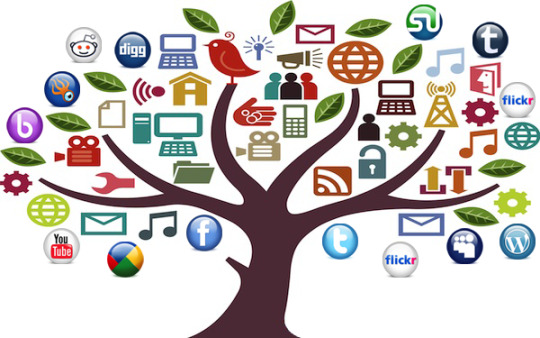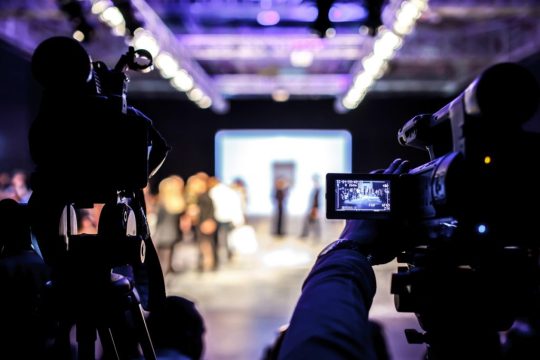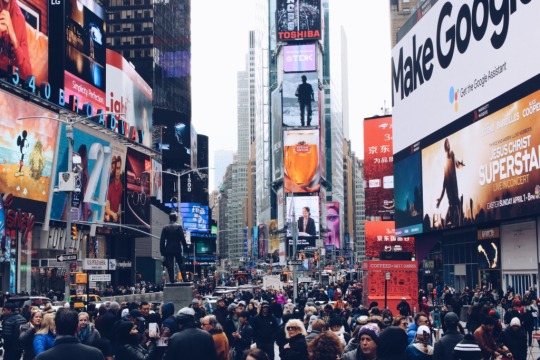Text
Language and Media: Ways on How to evaluate Language use in the Media by: Van Naputo

Media is a term which covers all the means of communication which have functions such as informing, raising awareness, education, socialization, entertainment and agenda setting, including all kinds of oral, written and visual images. (“What is Media”, n.d.) Upon the dawn of technology, many types of Media came into existence; media people tried to made use of technology to still give the people the pieces of information they want to have and as time passed, people came up with different modes to provide news to the public. Based on the type of medium, their role may be different, but they all exist to communicate to the audience and affect their perceptions. Today, people do not have to travel oceans or wait for a pigeon to get the latest news, they just have to look for the different forms and types of media to find what they are looking for. (Gooseberry, n.d.) However, the media must know who their audiences are, and they must know what proper language approach to use for them to serve the best to the people.
Moreover, people must also know how to critically evaluate the media content and information since not all contents served in those different types of Media are valid.
Definition of Terms
Media linguistics is composed of two words which are “media” and “linguistics” which means it investigates the relationship between language use and public discourse conveyed through the media. (Wyss, 2019) In other words, Luginbühl (2015) stated in Media Linguistics: On Mediality and Culturality, “Media linguistics studies how language is used in the media”
Language Register
In linguistics it is defined as the way a speaker uses language differently in different circumstances. Think about the words you choose, your tone of voice, even your body language. You probably behave very differently chatting with a friend than you would at a formal dinner party or during a job interview. These variations in formality, also called stylistic variation, are known as registers in linguistics. They are determined by such factors as social occasion, context, purpose, and audience. (Nordquist, 2019) Language register is the level of formality with which you speak. Different situations and people call for different registers. (Eaton, 2018) According to Montano (n.d.), there are five language registers or styles: Frozen, Formal, Consultative, Casual and Intimate
Stylistics
Stylistics is a branch of applied linguistics concerned with the study of style in texts, especially, but not exclusively, in literary works. Also called literary linguistics, stylistics focuses on the figures, tropes, and other rhetorical devices used to provide variety and a distinctness to someone's writing. It is linguistic analysis plus literary criticism. (Nordquist, 2019) In addition, Stylistics is the study of the devices in languages (such as rhetorical figures and syntactical patterns) that are considered to produce expressive or literary style. (Britannica, 2016)
Grammar
The grammar of a language includes basic axioms such as verb tenses, articles and adjectives (and their proper order), how questions are phrased, and much more. Language cannot function without grammar. It would simply make no sense—people require grammar to communicate effectively.
Speakers and listeners, authors and their audiences must function in like systems in order to understand one another. In other words, a language without grammar is like a pile of bricks without mortar to hold them together. While the basic components are present, they are, for all intents and purposes, useless. (Nordquist, 2020)
Semiotics
Semiotics is the study of sign systems. It explores how words and other signs make meaning. In semiotics, a sign is anything that stands in for something other than itself. This lesson focuses primarily on linguistic signs.
The word 'semiotics' dates back to ancient Greece, but its use in modern linguistics was propelled in the 19th century with the research of Ferdinand de Saussure. Saussure was a Swiss linguist who contributed greatly to the study of semiotics, also sometimes referred to as semiology. (Taylor, n.d.)
Pragmatics
Pragmatics deals with utterances, by which we will mean specific events, the intentional acts of speakers at times and places, typically involving language. Logic and semantics traditionally deal with properties of types of expressions, and not with properties that differ from token to token, or use to use, or, as we shall say, from utterance to utterance, and vary with the particular properties that differentiate them. Pragmatics is sometimes characterized as dealing with the effects of context. This is equivalent to saying it deals with utterances, if one collectively refers to all the facts that can vary from utterance to utterance as ‘context.’ One must be careful, however, for the term is often used with more limited meanings. (Pragmatics, 2006)

PRINT MEDIA
Print media refers to paper publications circulated in the form of physical editions of books, magazines, journals and newsletters. (What is the meaning of Print Media?, n.d.)
In addition, Millenger, (2018) said that, print media is the printed version of telling the news, primarily through newspapers and magazines. Before the invention and widespread use of printing presses, printed materials had to be written by hand. It was a painstaking process that made mass distribution impossible.
The following are the ways on how to evaluate Print Media in terms of:
Register
Usually, print media uses Formal Register because it is a one-way process that does not demand any quick response from the audience.
Stylistics
Print Media uses formal type of writing. Also, it gives the readers the taste of excitement for the readers to be carried unto the important part of the topic or the article. The information of the author is detailed for an easy access if the author committed some mistakes or problems in his/her published content. The articles, statements, news or etc. that are in Print Media usually have evidences that supports every claim.
Grammar
Print Media uses correct grammar: it uses formal register and formal type of writing; hence, it must contain correct grammar and of course with correct spelling. If authors will use incorrect spelling and grammar, it might affect the credibility of the news.
Semiotics
For a powerful media design, print media must use effective font styles and font sizes to capture the attention of the readers: bold and formal font style must be used. For an eye-grabber, print media must use graphics that could highlight certain parts: it should not create disastrous graphics and should relate to the topic presented.
Pragmatics
Readers are more focused on the headline before reading the entire article or news; headline is already speaking to the audience. They imply either literal meaning or sarcasm. Hence, headline sets the mood of the reader towards the media; it must create an effect to the audiences’ minds. Putting metaphorical statements, questions, quotes, full-of-feeling words will help the media have a powerful effect to the readers.

VISUAL MEDIA
Visual Media is a colloquial expression used to designate things like TV, movies, photography, painting and so on. (What are the types of effective Visual Media?, 2020) Visual media are sources of information in the form of visual representations. These can be abstractions, analogues, rough illustrations, or digital reproductions of the objects. There should be an interpretation of data, and sources may be hosted on the internet, printed in publications, displayed through broadcast media, or otherwise disseminated. (What is Visual Media and Information?, n.d.)
The following are the ways on how to evaluate Visual Media content in terms of:
Register
This type of media uses different kinds of register basing on the content. In news, it uses formal type of language register. On the other hand, movies use different types of language registers: consultative, to casual, to intimate depending on the content and the characters.
Stylistics
Visual Media is using different styles and that this type of media is exciting because it uses comparison between things: light versus dark, good versus evil, life and death, especially in movies. Though this media is using various styles, it will not be detached from its way of interpreting things and its meaning. As Weber (n.d.) said, “Images have an effect on communication. They initiate and control communication. And they change communication.”
Grammar
Visual Media uses a non-standard grammar. This type of media uses informal grammar: slang words, contractions, and new words that are not seen in the dictionary especially in movies depending on the theme or setting of the movie. Moreover, images have their own language and that sometimes they use informal grammar and sometimes, unidentified --- abstract images or paintings.
Semiotics
In movies, signs that are shown are not that emphasized because the focus of the audience are the main characters in the movie. However, these signs: road sign, signage in malls, traffic signs and etc. are there to imply that it should be followed. Moreover, in images: photographs or paintings, there are certain signs that connotes meaning to the public audience. This type of media is more on symbolization to interpret certain things. For example, in colors, black is a representation of mourn or sad, white for purity and peace, red for love and blue for loyalty and wisdom. However, these interpretations vary depending on your sense of geography – culture. These signs are shown in this type of media because they let the image, colors, shapes and etc. speak for itself.
Pragmatics
Images such as photographs and paintings cannot utter words because its way of communicating to the audience is by speaking through every single detail of the photograph or the painting. On the other hand, movies’ way of conveying its message is by the use of body language, gestures and how characters use stress and intonation in throwing their lines; how will they convey the message without literally implying the point.

ELECTRONIC BROADCAST MEDIA
Historically, broadcast media has been a public service, as with public radio which is funded by the government. This includes the Canadian Broadcasting Corporation (CBC) in Canada and National Public Radio (NPR) in the United States. Broadcast media can also be private and includes advertising. Global TV and CTV are examples of commercial television. The term 'broadcast media' covers a wide range of different communication methods that include television, radio, podcasts, blogs, advertising, websites, online streaming and digital journalism. Broadcast media provides valuable information that can inform and educate and includes public service announcements, daily news, weather forecasts, interviews, and documentaries. Broadcast media is also recreational and includes reality television, situation and sketch comedies, movies, sports and advertising. (What is Broadcast Media?, n.d.) Broadcast media describes the traditional forms of media that include television and radio. Technically, the term ‘broadcast media’ can include the internet as well… (Broadcast Media Definition, 2004)
The following are the ways on how to evaluate Electronic Broadcast Media content in terms of:
Register
Electronic Broadcast Media is using formal register: not a full-blown formal register since they are not expecting feedbacks from the audience, but less formal. Sometimes, they use consultative register in asking people or experts about a certain matter.
Stylistics
Electronic Broadcasting Media uses electromechanical or electronic devices to access the content given. Moreover, they are not practicing excessive foul words and language because they are more of a family-friendly media form. Main resources of electronic media are CD-ROM, online content, slide presentations, audio recordings, video recordings and multimedia presentations. Emotional appeal and repetition are highly observed.
Grammar
This type of media often uses correct grammar in relaying news to the audience and sometimes, their choice of words used are those surface words not the highfalutin words for the better understanding of the audience listening, watching or reading the content.
Semiotics
Electronic Broadcast Media is mainly using TV and Radio. Televisions uses two types of media: Visual (moving images, videos, clips, images) and Audio Media (sound: voice, music and etc.) On the other hand, Radio uses Audio Media, but in present times, Radio is accessing Social Media and broadcasting their news at a live setting. However, traditionally, Radio is mainly using Audio Media. This type of media --- Electronic Broadcast Media --- is presenting their news content in a hierarchical manner: from the very important (politics, economy, and the most trending topic/s) and to the least important (entertainment, sports and etc.)
Pragmatics
TV newscasters or anchors uses scripts in relaying news to the public, but some of what they are uttering in the news are in their own opinion. Some of them are speaking sarcastically to make it not so direct to point as to who or what the anchor is referring to. However, in radio, some anchormen are not sticking to the scripts given to them; they prefer speaking on whatever they want to speak: some might be biased, and some might be abstain. Sometimes, anchormen are uttering things in manners depending as to who is he/she talking to.

OUTDOOR MEDIA
It typically consists of any advertising seen outside of the home, and is primarily grouped into a few specific categories: Billboards, posters and transit etc.
The following are the ways on how to evaluate Outdoor Media in terms of:
Register
Outdoor Media sometimes uses consultative type of register. Overtime, they use casual register for them to be able grab their client or their audience for a better advertising. They use this type of register to somehow create a chill and friendly environment.
Stylistics
This type of media is mostly using figurative languages: personification, hyperbole and metaphor as it grabs the attention of the audience. Also, they make use of interrogative sentences to make the audience think about what the billboard or poster suggests.
Grammar
Billboards and posters is using limited words for it to be catchy to the audience. Hence, this type of media mostly uses informal grammar: using of contractions, slang words and they even use new morphemes --- those that are not seen in the dictionary. They have to use these informalities of the grammar because they address all types of audience; may it be from high class audience or from the lay audience.
Semiotics
In this type of media, they use signs to give out meaning; the sign could mean its literal meaning, sometimes they use it as symbolism. Moreover, outdoor media mostly uses visuals to give an impact to what they are advertising and to give additional effect to what they want to convey.
Pragmatics
Outdoor media is using limited use of words for it to be catchy and easy to read. With that, they use different styles in conveying what they really want to convey and some of their sentence structures are different. They also use some lay terms such as new-word expressions that could attract to the audience. Also, outdoor media uses images and words with big letters for it to be readable especially in billboards.

TRANSIT MEDIA
Transit media refers to advertising placed in, on, or around modes of public transportation: buses, subways, and taxis, as well as at bus, train, and subway stations. Transit media can be a great way to reach a really diverse audience: families traveling to day cares, professionals heading to work, tourists navigating a new town, or even students making their way to a local coffee shop. (Hendricks, n.d.)
Transit media advertising is a mass media marketing tool which mainly use public transport to display an advertisement such as displays on buses, autos, cabs, trains, or any transportation mode that consumers use to travel during the course of a day. The idea of transit advertising is not only promoting a product or service outside the vehicle but also consist of displays placed inside the vehicles. Transit is an important medium for reaching an audience of all ages and backgrounds. In the last few years Transit media advertising has become more popular than ever. (Transit Media Advertising, 2020)
The following are the ways on how to evaluate Transit Media in terms of:
Register
Transit media can use different kinds of language register, it can be formal, casual, consultative or static, depending on their target audience.
Stylistics
This type of media uses limited choice of words. Sometimes they could use either formal or informal style of writing given that is should be limited depending on what they want to convey.
Grammar
Transit Media uses informal grammar, and at times, they break some rules of grammar to make it very catchy to the audience. Since they have limited use space, they usually use contractions, slang words more often, and using new words -- expressions to exact -- for it to be easy to read; they use limited words such as 3 – 5 words.
Semiotics
This type of media would not try to overdo things since they are just posted mostly in vehicles. Hence, they do not use symbolism for the audience to not consume that much time thinking of what the content means.
Pragmatics
Transit media tend to just present what is literal than letting the audience think. However, this matter is depending on their target audience and what are they advertising.

DIGITAL MEDIA
Digital media is any form of media that uses electronic devices for distribution. This form of media can be created, viewed, modified and distributed via electronic devices. Digital media is commonly used software, video games, videos, websites, social media, and online advertising. Even though digital media is part of our everyday culture, business owners still find themselves uncomfortable with replacing their paper advertising with digital marketing services.
However, with the constant shifts in technology, one cannot deny the influence that digital media has over our way of life. It changes the way we educate, entertain, publish and interact with one another on a daily basis. And, as a result of this influence, digital media pushes the business world out of the industrial age and into the information age. We’re no longer writing things with pens on paper, but instead communicating through digital devices. (Preston, n.d.)
The following are the ways on how to evaluate Digital Media in terms of:
Register
Digital Media uses more of informal register: casual and consultative, than formal register. However, this is just depending on the content and target audience. Social Media like Facebook, Twitter, Instagram and etc. uses casual register and consultative, at times, even intimate register. They just use formal register when their content is for academic and professional purpose.
Stylistics
This type of media mostly uses new style of writing. For instance, in Facebook or Twitter, they tend to use more punctuation marks: commas, periods, exclamation points and question marks, to emphasize their feelings and what they want to mean; mostly, they put more emotions in posting feeds. Moreover, styles of writing in digital media would depend on the content they want to portray.
Grammar
In digital media, usage of correct grammar is not that required because most digital media users are lay people especially in Social Media. However, this will just depend on the purpose of the author or might depend on how will a person relay his/her message to the public. Digital media might use correct or incorrect grammar, but its purpose will not change but could somehow affect the perspective of the reader.
Semiotics
This type of media uses a lot of details to capture the audiences’ attention. They use graphics that are pleasing to the eye and use icons that symbolizes something in the content. Visuals are usually used in digital media to better explain the statements -- if any -- with the help of images. Moreover, with the use of texts in digital media, certain things like example if a post is encoded in all capital letters, it might mean disappointment, anger or shouting.
Pragmatics
Language use here might not be literally implied; some might use words like “HAHAHA” but does not mean that someone is happy. In this type of media, you cannot tell when someone really means what he/she want to mean, especially in text messages, posts or chats. People might mean literal; some might mean something. Hence, you should be careful in understanding and be aware in pragmatic functions to be able to communicate well.
CONCLUSION
As time passed, people came up with different modes to provide news to the public; people use different types of media to find out news, learn new things, communicate, and entertain themselves. Based on the type of medium, their role may be different, but they all exist to communicate to the audience and affect their perceptions. With the advance in technology, people can choose the type of media they want to use, no matter the time or place. Moreover, they can hear the radio while driving to work, can watch their favorite show on their phones, and they can find out any information and news on their laptops or mobile devices. Media and language can really prosper by the use of internet and by the use of technology. We just have to use those properly and religiously for it to prosper and serve its purpose. Today, people do not have to travel oceans or wait for a pigeon to get information, they just have to look for the different forms and types of media to find what they are looking for.
REFERENCES
Bean-Millenger, B. (2018, August 08). Introduction of Print Media. Retrieved from BizFluent: https://bizfluent.com/facts-6852659-introduction-print-media.html
Britannica, T. E. (2016, April 14). Stylistics. Retrieved from Encyclopaedia Britannica: https://www.britannica.com/science/stylistics
Broadcast Media Definition. (2004). Retrieved from OpenPR Worldwide Public Relations: https://www.openpr.com/wiki/broadcast-media
Hendricks, B. (n.d.). What is Transit Media? - Definition, Advantages & Disadvantages. Retrieved from Study.com: https://study.com/academy/lesson/what-is-transit-media-definition-advantages-disadvantages.html
Hobbs, L. (2020, January 2). What is outdoor media? Retrieved from Effortless Outdoor Media: https://www.effortlessoutdoormedia.com/what-is-outdoor-media/
Luginbühl, M. (2015). What does Media Linguistics Study? Retrieved from Media Linguistics: On Mediality and Culturality: http://10plus1journal.com/wp-content/uploads/2015/09/00_OPENER_Luginbuehl.pdf
Nordquist, R. (2019, July 16). Stylistics and Elements of Style in Literature. Retrieved from ThoughtCo.: https://www.thoughtco.com/stylistics-language-studies-1692000
Nordquist, R. (2020, January 27). English Grammar: Discussions, Definitions, and Examples. Retrieved from ThoughtCo.: https://www.thoughtco.com/what-is-grammar-1690909
Pragmatics. (2006, November 28). Retrieved from Stanford Encyclopedia of Philosophy: https://plato.stanford.edu/entries/pragmatics/
Preston, L. (n.d.). What is Digital Media? Retrieved from DigitaLogic: https://www.digitallogic.co/blog/what-is-digital-media/#:~:text=Digital%20media%20is%20any%20form,social%20media%2C%20and%20online%20advertising.
Taylor, D. (n.d.). What is Semiotics? - Definition & Examples. Retrieved from Study.com: https://study.com/academy/lesson/what-is-semiotics-definition-examples.html
Transit Media Advertising. (2020). Retrieved from Excellent Publicity: https://www.excellentpublicity.com/media/transit/default/transit-media-advertising
Weber, W. (n.d.). In brief: Media Linguistics with a Focus on Visual Communication. Retrieved from Zhaw: https://www.zhaw.ch/en/linguistics/research/media-linguistics/
What are the types of effective visual media? (2020). Retrieved from Purple Cow: https://purplecowagency.com/what-are-the-types-of-effective-visual-media/#:~:text=%E2%80%9CVisual%20Media%E2%80%9D%20is%20a%20colloquial,photography%2C%20painting%20and%20so%20on%20.&text=All%20the%20so%20called%20visual,(especially%20touch%20and%20hearin
What is Broadcast Media? (n.d.). Retrieved from Introduction to Accessible Design in Media: http://www.humber.ca/makingaccessiblemedia/modules/01/02.html
What is the meaning of Print Media? (n.d.). Retrieved from SoyangGroup: http://www.soyang.net/blog/what-is-the-meaning-of-print-media-2/
What is Visual Media and Information? (n.d.). Retrieved from Media and Information Literacy e-portfolio: https://ewikstar.wixsite.com/mil-eportfolio/visual-media-and-information
Wyss, V. (2019). Media Linguistics. Retrieved from Zhaw: https://www.zhaw.ch/en/linguistics/research/media-linguistics/
1 note
·
View note